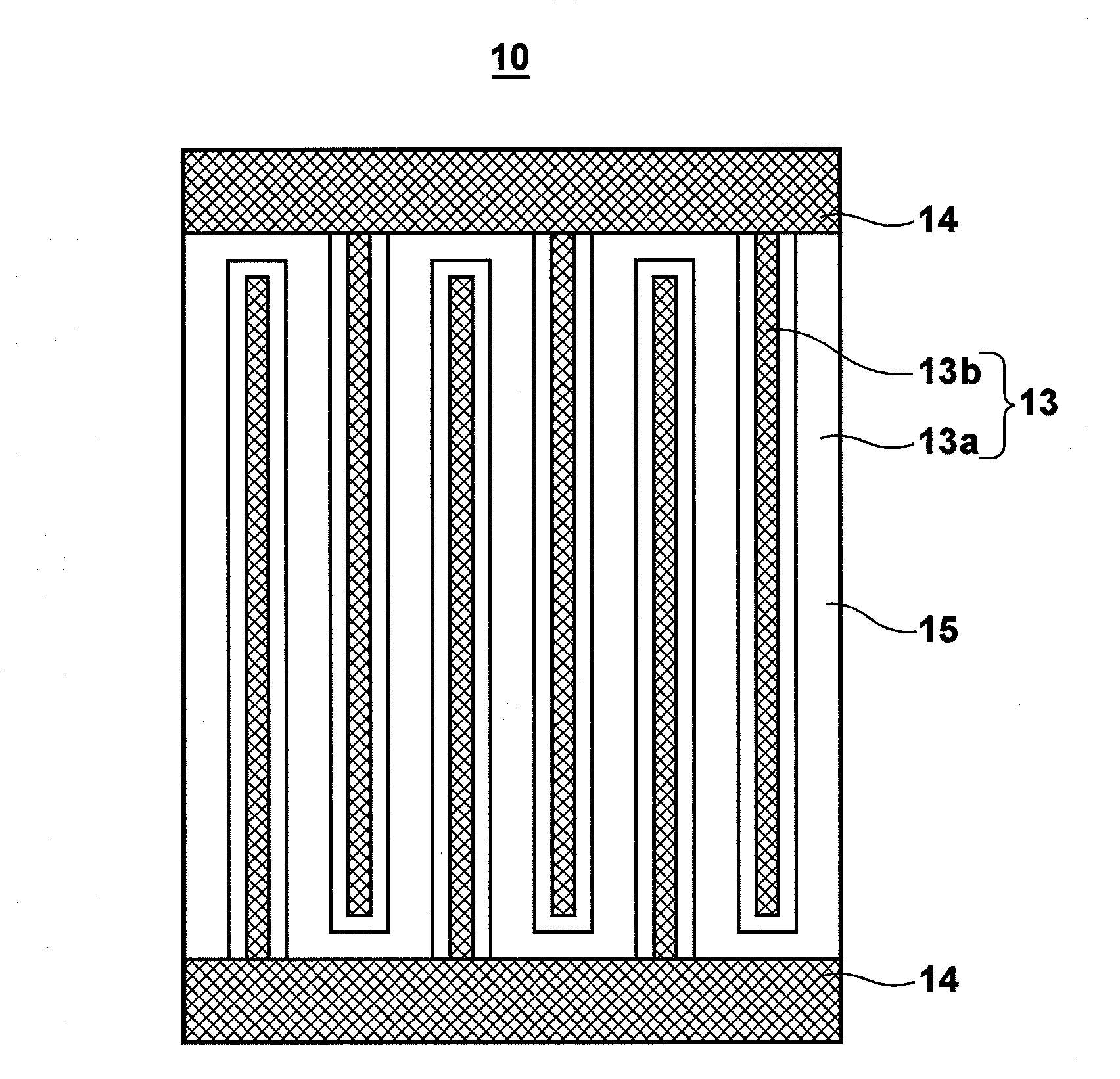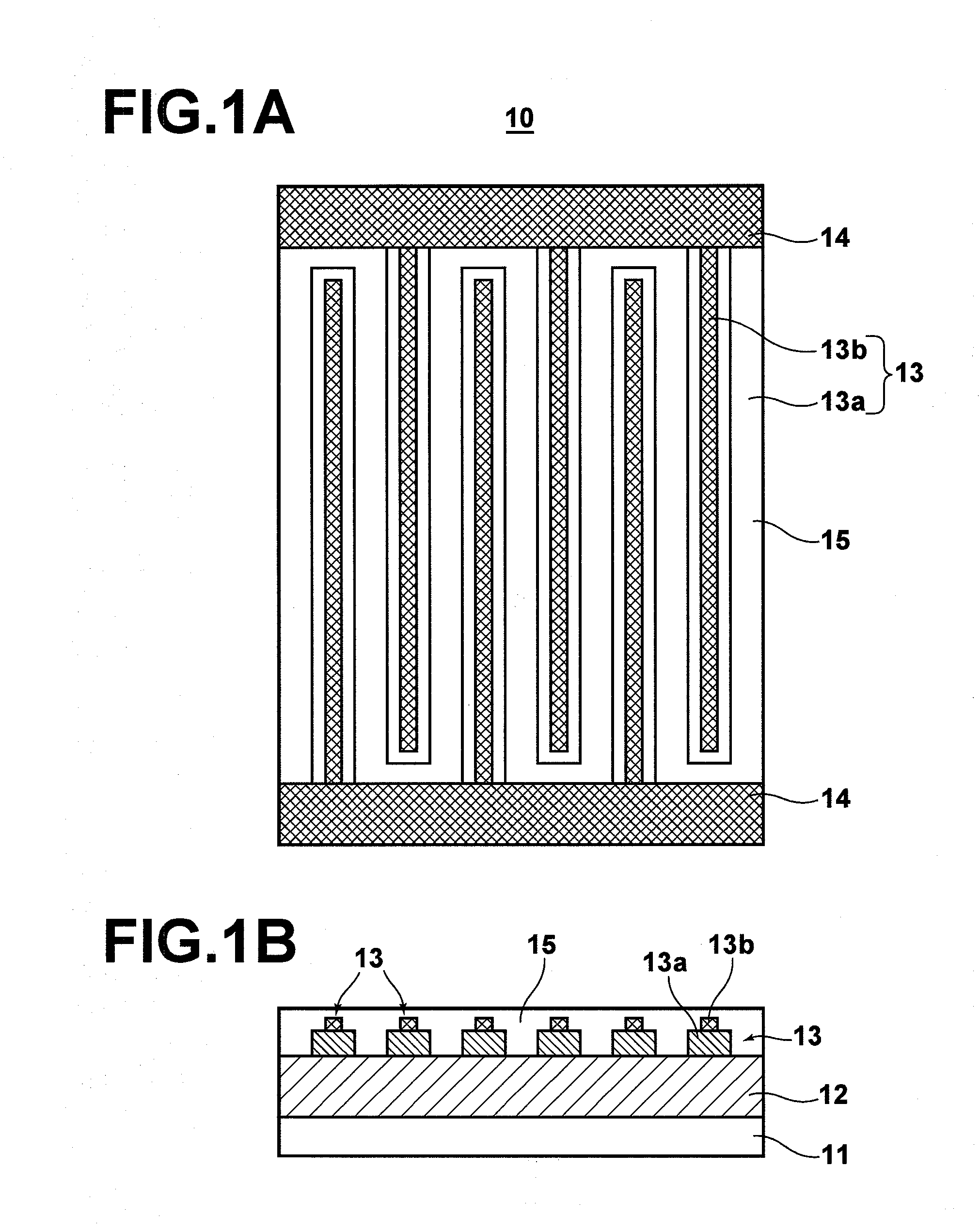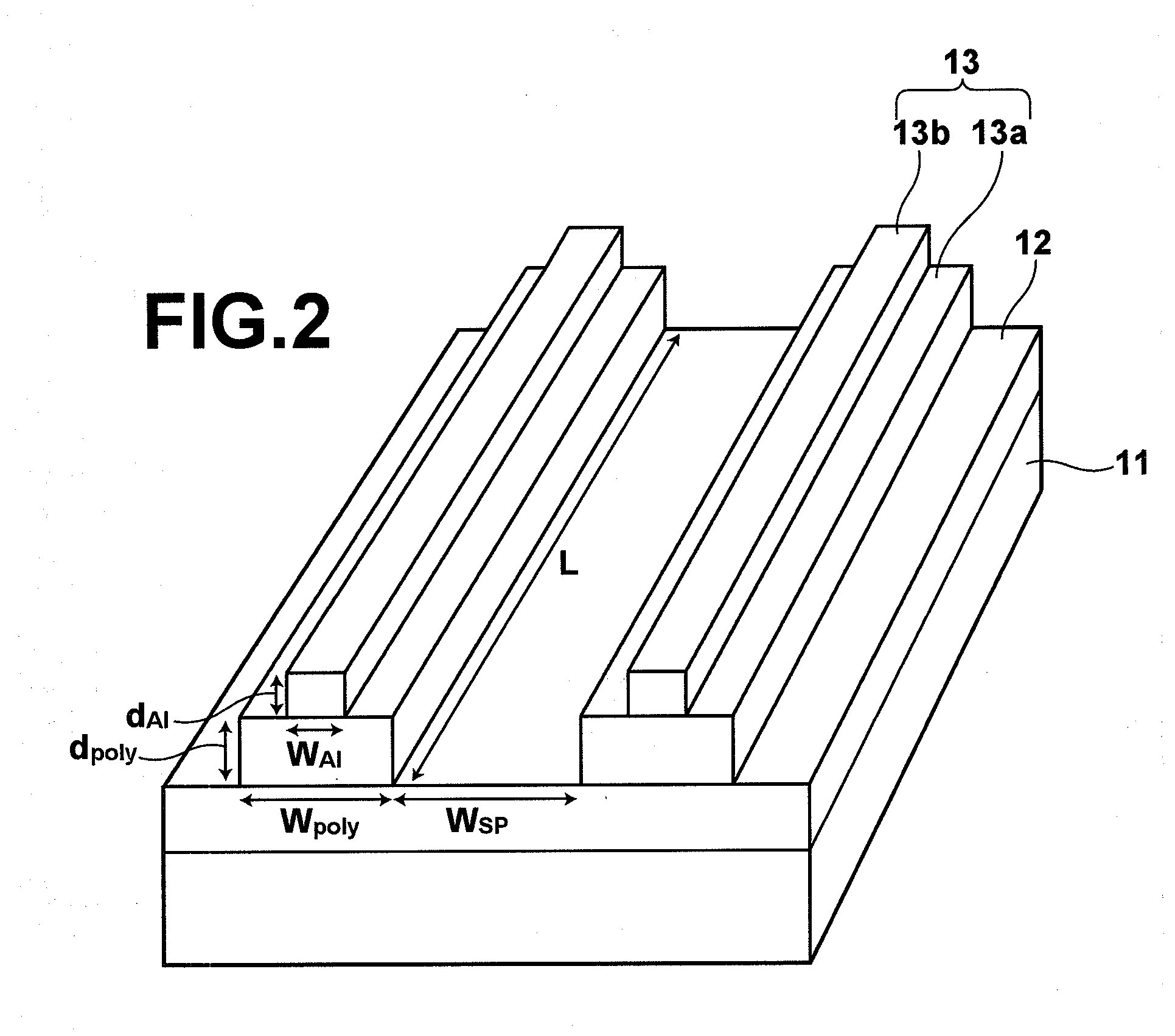photodiode
a photodiode and photodiode technology, applied in the field of photodiodes, can solve the problems of long travel distance of holes, difficult to satisfy the demands of difficulty in sufficiently alleviating the trade-off between increased sensitivity and speed, so as to achieve high-speed response, small width, and large specific resistance
- Summary
- Abstract
- Description
- Claims
- Application Information
AI Technical Summary
Benefits of technology
Problems solved by technology
Method used
Image
Examples
Embodiment Construction
[0034]Hereinafter, an exemplary embodiment of the present invention will be described in detail with reference to the accompanying drawings. FIGS. 1A and 1B respectively illustrate a schematic planar shape and a schematic sectional elevational shape of the photodiode 10 according to an embodiment of the present invention. The photodiode of the present embodiment is, as an example, a MSM (metal-semiconductor-metal) lateral photodiode. As illustrated, the photodiode 10 includes: a semiconductor substrate 11; an active layer 12 formed on the substrate 11; a comb electrode including a plurality of comb electrode fingers 13 arranged side by side on the active layer 12 with appropriate spacing; electrodes 14 connected to the comb electrode fingers 13; and a passivation layer 15 formed on the comb electrode fingers 13.
[0035]In FIG. 1A, the upper electrode 14 is the positive electrode and connected to a signal line, and lower electrode 14 is the negative electrode and grounded. Thus, the co...
PUM
 Login to View More
Login to View More Abstract
Description
Claims
Application Information
 Login to View More
Login to View More - R&D
- Intellectual Property
- Life Sciences
- Materials
- Tech Scout
- Unparalleled Data Quality
- Higher Quality Content
- 60% Fewer Hallucinations
Browse by: Latest US Patents, China's latest patents, Technical Efficacy Thesaurus, Application Domain, Technology Topic, Popular Technical Reports.
© 2025 PatSnap. All rights reserved.Legal|Privacy policy|Modern Slavery Act Transparency Statement|Sitemap|About US| Contact US: help@patsnap.com



